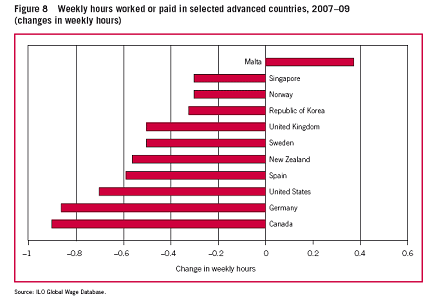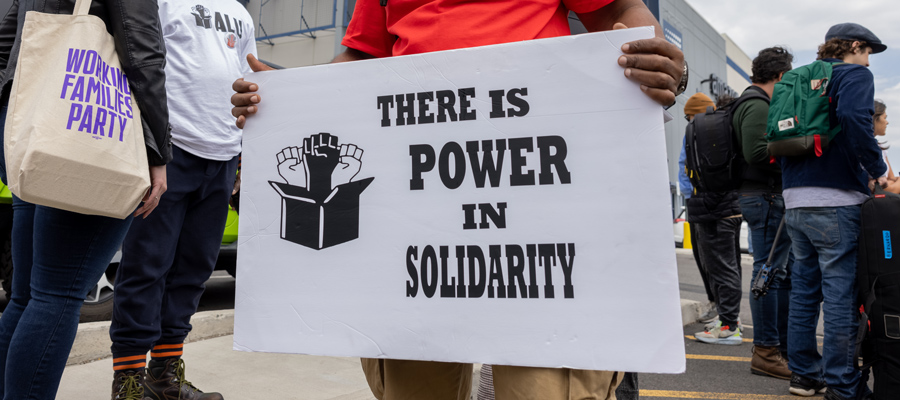ILO points to low union density and low minimum wages as causes of economic collapse
One more major international organization has published a report commenting on the damage done by growing inequality in society. In December the International Labour Organization (ILO) published its second Global Wage Report. The first such report examined trends in global wages in good times. This one examines what happened in the economic collapse.
Looking at data from 115 countries the ILO found the economic crisis cut growth in wages by half. If China is excluded from the calculation the impact is much more severe.
Part of the reason for the decline in increasing wages was the loss of hours worked. In this, Canada had one of the largest declines among advanced countries.
The ILO reports a long term trend that sees wages declining as a share of national output. This was actually reversed to a degree by the recession that saw profits fall. The ILO reports:
The recent global trends in wages and wage share should be seen against a backdrop of widespread and rising wage inequality, characterized by rapidly increasing wages at the top and stagnating wages at the median and bottom of the distribution…Although the largest part of this increase was due to top earners ‘flying away’ from the majority, another part was due to the so-called ‘collapsing bottom’, where the distance between median workers and low-paid workers has increased in 12 out of 28 countries.
As with earlier studies the ILO report suggests a link between growing income inequality and the collapse.
While there are, of course, many factors which have triggered the crisis, a group of 30 distinguished experts led by Jean-Paul Fitoussi and Joseph Stiglitz considered that the crisis had its structural roots in the decline of aggregate demand that preceded the crisis and which was due to changes in income distribution. They argue that the increase in inequality in the years before the crisis depressed aggregate demand by transferring money from low-income households – which have a high propensity to spend – to households with higher incomes, which tend to spend less and save more.
In the US this was compensated for by increased borrowing which ultimately proved unsustainable. Here in Canada the Bank of Canada has raised concerns about our record levels of consumer debt.
Again mirroring earlier reports, (here and here) the ILO calls for more effective collective bargaining and for higher minimum wages. The ILO demonstrates the link between low levels of unionization and high levels of low wages. In countries with less than 15% union density the incidence of low wages is nearly 25%. The incidence of low wages falls by more than half in countries with a union density of 50% or higher.
So where do we stand in Canada and in British Columbia? The gap in income between the rich and the rest is widening. Wages have stagnated. In BC the minimum wage has been frozen for a decade and year after year we have the highest rate of child poverty in Canada. Union density is declining. Many of us have believed for years government policies in BC were socially reprehensible. Now international organizations like the ILO are demonstrating that their economic policies have also helped to drive us into economic crisis.
Topics: Economy, Poverty, inequality & welfare



